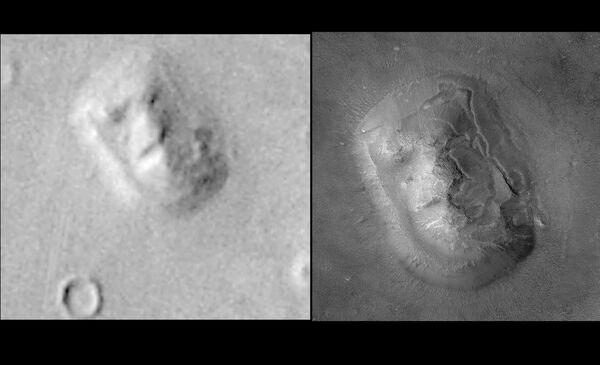Mars 5 — 3MS No.53S — was equipped with a wide array of instruments to study Mars. In addition to by-then standard issue cameras, it carried a radio telescope, a radiometer, multiple photometers, polarimeters, a magnetometer, plasma traps, an electrostatic analyzer, a gamma-ray spectrometer, and a radio probe.
The Soviet Union launches Mars 5, the fifth of seven of probes sent to the red planet in the 1960s and 70 s. Mars 5.. #aviation #history pic.twitter.com/AEKeeUsmUL
— Aviation History (@HistoryAviation) July 25, 2017
Built by then-Soviet, now Russian aerospace firm Lavochkin, Mars 5 was the second of two 3MS spacecraft launched to Mars in 1973, following Mars 4. Pressure on the project to be a success was immense — 4 reached Mars but failed to enter orbit, although it did return some images and data.
The probe was launched by a Proton-K carrier rocket at 18:55 UTC July 25, 1973, reaching a low Earth parking orbit before the Blok D launch system propelled Mars 5 into heliocentric orbit, bound for Mars.
Cannoning on in to space, the plucky craft performed course correction maneuvers August 3, 1973 and February 2, 1974, before finally reaching the Red Planet February 12. At 14:44 UTC that day, the craft's engines ignited as it began its burning insertion into orbit — but despite its promising beginnings, the mission would prove to be somewhat a failure. As soon as Mars 5 entered orbit around Mars, its pressurised instrument compartment began to leak. It ceased operations February 28, having returned 180 photographs.
The snaps offered tantalizing glimpses of the Martian surface — however, a shot of the "Face on Mars" was not among them. It would not be until July 25, 1976 that the apparent alien countenance was caught by the Viking 1.
#OnThisDay 1976: The Viking 1 spacecraft took a photo of a Martian rock formation now dubbed the “Face on Mars”. pic.twitter.com/SF8pedl2Pf
— Yesterday Channel (@YesterdayTweets) July 25, 2017
Launched August 20, 1975, Viking 1 had the express mission of scouring the planet for alien life — although NASA almost certainly hadn't bargained on what the craft would find when it finally began taking orbital shots of Mars.
It took around a dozen shots of the Cydonia region — one (035A72) depicted an area which appeared to be home to a two kilometer-long face. Initially dismissed by the space agency as a mere trick of light and shadow, a second image (070A13) — acquired 35 orbits later, at a different sun angle — also seemingly showed the "face" on Mars.

Despite NASA's protestations of innocence, the public's imagination was seized by the idea the formation did not arise naturally.
Most commonly, it was claimed the face was the remnant of an alien civilization, and other rocky portions of the area may be the vestiges of a long-crumbled alien city. The meme has frequently appeared in popular culture, including movies, television shows, video games, comic books, and even music, uniformly described as a telltale sign that extraterrestrial beings once resided on Mars at some stage of the planet's history.
who care about water on mars when there's a literal crater that looks like kermit the frog pic.twitter.com/zBtderKpDI
— Sara (@The_LogLady) October 1, 2015
Other photos of Mars have subsequently been claimed to depict faces — one example is the Galle Crater, which resembles a smiley, while others even suggest they see Kermit the Frog of Muppets and Sesame Street fame.
Sadly for conspiracy theorists, in April 1998 NASA's Mars Global Surveyor took more detailed images of the "face" — revealing NASA's original, humdrum explanation for the images was indeed correct, and the image is but an optical illusion, with a face-like appearance only detectable due to a photograph's viewing and illumination angles.
Humans identify faces where there are none due to the Law of Pragnanz — it states individuals will perceive and interpret ambiguous or complex images as the simplest form possible.
In essence, as the craters and hills of Mars resemble the shape of eyes and a mouth, the human brain will condense those images into a human face due to familiarity with the latter.
Similar optical illusions can be found in the geology of Earth, including the Old Man of the Mountain, the Romanian Sphinx and the Badlands Guardian.
The Romanian sphinx, Bucegi mountains, Romania. pic.twitter.com/LVjTtwGwL4
— View Finder (@jisankhan0071) February 24, 2017
Subsequent images taken by the Mars Reconnaissance Orbiter and the European Space Agency's Mars Express probe have only served to confirm this maddeningly mundane hypothesis, thanks to the much improved resolution offered by their cameras.


